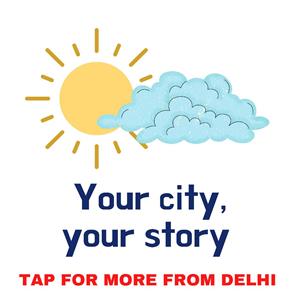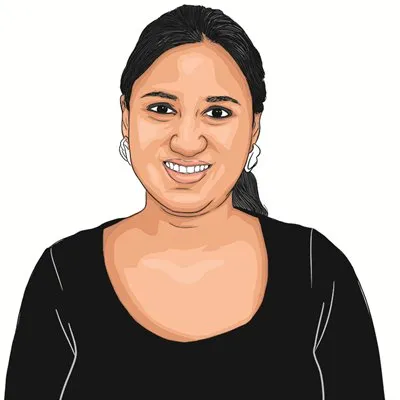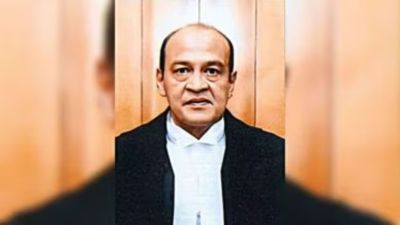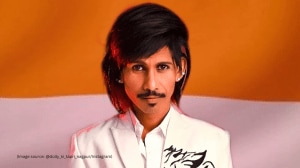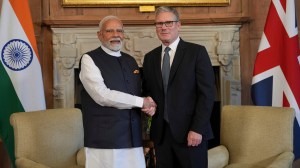Delhi Rewind: When Deshbandhu College was built for educating kids of Partition refugees
Deshbandhu College, as it came to be named after freedom fighter Deshbandhu Gupta, had been established by the Ministry of Rehabilitation in the refugee colony of Kalkaji, with the specific purpose of educating children of those displaced by the Partition.
 Deshbandhu College had been established by the Ministry of Rehabilitation in the refugee colony of Kalkaji in 1952.
Deshbandhu College had been established by the Ministry of Rehabilitation in the refugee colony of Kalkaji in 1952.Gurcharan Singh (82) often remembers the morning of 1952 when, on a walk to the market in Kalkaji, he heard a lot of excitement about some kind of inauguration. Just 12 at that time, he enthusiastically followed the crowd to sneak into the celebration and get hold of sweets and cold drinks being distributed. It was much later that he discovered that the then minister of education, Maulana Abul Kalam Azad, had graced his neighbourhood to inaugurate a first-of-its-kind college.
Deshbandhu College, as it came to be named after freedom fighter Deshbandhu Gupta, had been established by the Ministry of Rehabilitation in the refugee colony of Kalkaji, with the specific purpose of educating children of those displaced by the Partition.
 Deshbandhu College had been established by the Ministry of Rehabilitation in the refugee colony of Kalkaji in 1952; (above) Gurcharan Singh (82) was 12 at the time. (Adrija Roychowdhury)
Deshbandhu College had been established by the Ministry of Rehabilitation in the refugee colony of Kalkaji in 1952; (above) Gurcharan Singh (82) was 12 at the time. (Adrija Roychowdhury)
Singh was, at that time, living with his mother and six siblings at the refugee camp in Kalkaji Temple. He had found shelter in Delhi a couple of years back, having escaped the horrors of communal violence at his hometown of Quetta in Balochistan. “Those days we had no money, nor any means of livelihood. Education was hardly anyone’s priority,” said Singh.
He recalled how, in the early 50s, he would attend a government school in Kalkaji during the day and spend the evenings working in a firecracker factory nearby to earn a living for his family. Singh recently retired from the college, where he worked in the administrative division, and lives with his family in Kalkaji.
In these initial years after Independence, large parts of Delhi had been drawn up by the Ministry of Relief and Rehabilitation, specifically for housing Partition refugees. “This was a very turbulent time and the government’s priority was to provide means of livelihood and housing for the refugees. Issues of schooling and higher education, although important, were raised much later, only from 1949 onwards,” explained Shrishti Khanna, research scholar at Delhi University, currently working on the history of education in Delhi. “Also, several existing schools and colleges in Delhi were transformed to provide shelter to the refugees.”
Later, most of these schools and colleges started admitting these children for education as well. With time, however, it was realised that the number of displaced children had surpassed the seats available in existing schools and colleges. Thereafter, several schools were opened by the Ministry of Rehabilitation in refugee colonies such as Kalkaji, Lajpat Nagar and Kingsway Camp. “Some of these were also makeshift schools established in the camps,” said Khanna.
“Many of the existing schools were also converted into double shifts to accommodate displaced persons,” said Dr Vikas Gupta, Professor of Modern Indian History at Delhi University. He said that a number of scholarships were also started specifically aimed at displaced persons.
Dr Gupta explained that the Ministry of Relief and Rehabilitation had in 1948 established a board for the education of displaced people, which included Sardar Vallabhbhai Patel and Azad, among others.
He said there was a paradigm shift in the policy of education during this period, and the priority now was integration of all people irrespective of caste, class, religion or community. “The integrationist approach to bring together people under a mainstream nationalist is reflected in the way they built institutions,” he said. “So it’s not as if the displaced people were just given some money to settle here. Institutions were built specifically for the purpose of integrating them within the larger society.”
It is in this context of the Ministry’s plan to educate displaced persons that Deshbandhu College was opened with just 72 students. Singh, who was just 12 that time, recalled how the college immediately gained popularity among young adults in the areas in and around Kalkaji. It was particularly well known for its pre-medical and science courses.
Six years later, an evening college was opened on the same premises. It was realised that a number of displaced persons, whose education had been jeopardised on account of the Partition, were working in shops or as labourers in order to earn a livelihood. Consequently, an evening college started so as to meet the requirements of those who were unable to attend college in the morning. Singh, who had turned 18 that year and had dropped out of school after class XI, found a job as a peon in the college.
For the 42 years that he served the college, he saw it grow from its humble origins to the sprawling campus that it is today. “I became friends with most of the students,” he recollected with a smile. “As per protocol, the students of the evening college would have to show proof of a day job employment to get admission. Often, they would be confused on how to go about it and would approach me.”
From attendance to late fees payment, all issues of the young college goers would be resolved by him. In 1972, the college became part of the University of Delhi.
Dr S Narayanan, who joined Deshbandhu College in 1965 as Professor of Chemistry, said that unlike the campus colleges like St Stephen’s and Hindu, there was no craze among toppers to join this college. “Most students in Deshbandhu belonged to lower middle to middle class background,” he said.
Narayanan recalled an incident during the Mandal Commission protests of the 1990s when a student from Deshbandhu tried to self-immolate as a mark of protest on the Kalkaji main road, right outside the campus. “The incident was covered by the Time Magazine,” he said.
In the mid 1990s, the evening college turned from being only for boys to a co-educational one. Singh remembered the incident of a girl from Bihar who had come for admission to the college, and how nervous she was on account of not having the full fees. He had asked her to pay whatever she had and paid the remaining amount on her behalf from his own pocket.
In 2010, the morning and evening colleges split up, with the latter now being known as Ramanujan College.
Dr S P Agarwal, who had joined the evening college in 1980 as professor, said he initiated the decision to form a separate college in 2008 when he took over as principal. “The idea behind the split was to ensure individual development of both colleges,” said Dr Agarwal, who is currently principal of Ramanujan College.
In the last several years, he has seen the college grow to a most sought after one, not only for students from Delhi but also from other cities. He noted that among the college’s 3,200 students today, about 1,500 are those from outside the city.

